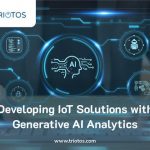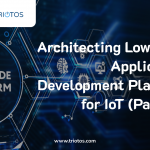
Analysis of ‘Big Data’ has been around for 10+ years promising to right many business ills and provide better information for business managers allowing them to focus on growing their businesses. While there are plenty of examples touted where this may be true, much of this has been hype providing ‘big data’ companies with a marketing pitch and keeping thousands of consultants and hundreds of conferences with something to talk about. It is true that there has been a lot of progress in underlying data processing and analytics algorithm tools but at the same time – big challenging data sets have proven immune to delivering meaningful results – we just have to look at COVID infection models to see this. Much of this is the result of poor data collection methods resulting in flaky data as well as an overstated belief in mathematical modeling to ‘predict’ future results.
For small and medium size business owners this situation has let to a status quo that is not very different from 10 years ago. They use whatever data is available from cash registers, order processing, shipment, production records to feed into spread sheets – the old data analysis war horse from the 1990s and run canned reports or their own analysis. Much of this is still manual.
With Industrial IoT things can change for the better. Done right, important business and operational data is now automatically collected and fed into a real time IoT data handling application that can process, categorize and feed the data to applications that analyze it and deliver it to managers and staff as applications that are easy to understand and use. So how do you implement an IIoT solution that will deliver real value and provide you with the insights your business needs. Here are 6 steps:
- Start by asking yourself what insights you would like to have. IIoT is about equipping your business with sensors and connectivity that can deliver this to an IIoT data handling application – these days often cloud based. So key is to associate the insights with data available or not available in your business. If you want to know where your assets are or how they are utilized, you need to deploy IIoT devices that deliver this data.
- Decide how you want this information delivered to you and your business team. Do you want real time messages, web, or mobile applications accessible from any phone or computer or summaries or reports delivered at regular intervals?
- Discuss how the information and insights are best delivered. Graphs and charts, tables, spread sheets and what these should show.
- Think about how the insights you would like are best derived. Are you looking for results or fluctuations, correlation between different events (these things are related) or causations based un underlaying events (this seems to be happening because of that)?
- Demand that your IIoT implementation will deliver the information and insights you want in your business. There are no such things as one size fits all. Your solution should be flexible enough so that you over time get more and more values from your investment. This means that the solution must grow and be fully integrated with your business and all your current and future IT and back office tools.
- There are a lot of presentation and analysis tools on the market and there are new tolls released every year. Your IIoT solution should be flexible enough to support evolving tools like Machine Learning and Artificial Intelligence but also use traditional statistical analysis tools like Variance, Correlation Multi-Dimensional Scaling, and cluster analysis.
At Triotos we specialize in cloud based IoT solutions and integrations using Amazon Web Services and Applications that are fully integrated with the analytics capabilities discussed in this blog. Leveraging our core offerings, we can customize a solution to address your current and future analytics needs and be initially deployed In a few months, not years at a fraction of the price of doing it yourself. As your business insight needs evolve, we will augment the solution with new IIoT analytics on o regular basis.







